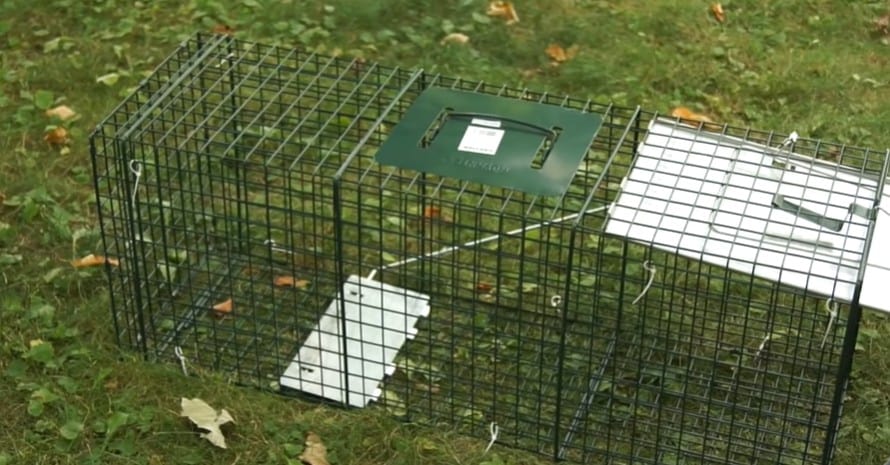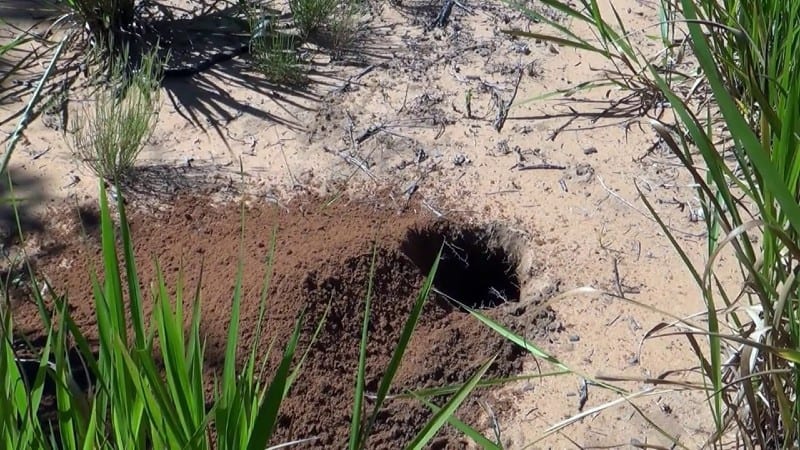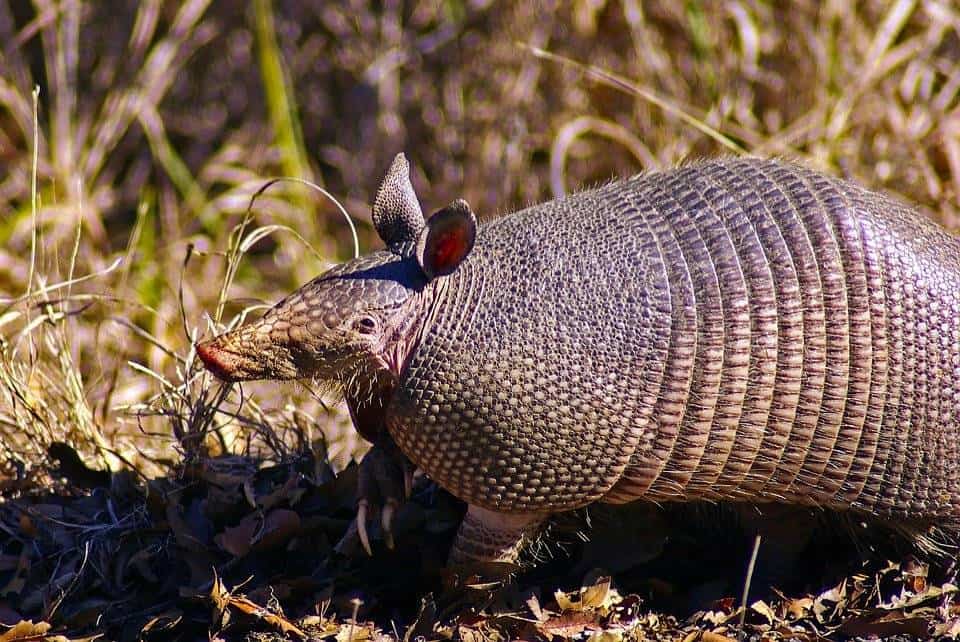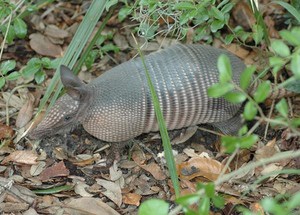If you live in the northern part of the USA or Canada, you probably haven’t met armadillos “in person”. However, if you reside in Arizona, Texas, Colorado, or other southern states, then these awkward-looking and ever-digging critters have most likely tried invading your back yard or garden space where their favorite yummies can be found in plenty.
Armadillos live peaceful lives. They will never start a fight with your dog or attack your cat. However, these little critters with sharp claws are crazy diggers. Their favorite hobby is digging deep, ugly holes in your yard and munching on your veggies. In addition to this, armadillos can pass on leprosy to humans – another major concern with these creatures.
Needless to say that if you see an armadillo closeby, you’re going to need to deal with it as soon as possible. Want to know how to keep armadillos away? That’s exactly what this post is dedicated to. Today, I’m going to elaborate on the following topics:
- Armadillos and their behavior.
- Dangers associated with these little digging maniacs.
- What smell repels armadillos.
- How to get rid of armadillos.
- How to keep armadillos out of your yard.
- How to prevent armadillos from digging in the yard.
Armadillo Control Made Easy: Getting to Know & Deterring the Pesky Rodents

Armadillos are unique four-footed barrel-shaped nocturnal mammals with tender stomachs, armor-resembling leathery skin, long, scaly tails, and strong curved claws. These anteater-resembling animals use their massive front claws for digging, while their long and sticky tongues are very good at pulling yummy termites and ants of their nests.
Armadillos are not very much into getting together and partying with their buddies and relatives. These lonesome diggers spend most of their time sleeping in burrows of their own making. They have really weak eyesight and hearing, but their one of a kind sense of smell compensates for these shortcomings. Armadillos are friendly by nature. For the most part, they just sleep, dig holes, or enjoy nature, minding their own business.
There’s a wide variety of armadillo species that differ in size and overall appearance. Armadillos prefer warm climates. Typically, they reside and hang out in Latin America, as well as in the southern states of the USA. Overall, armadillos are free-roaming creatures that may accidentally end up in your lovely garden space with all of its yummies. Therefore, having an anti-armadillo strategy in place would be wise.
Armadillos are persistent diggers. They destroy concrete foundations, telephone lines, and effortlessly dig under various kinds of fences, especially the ones that are too flimsy. Often burrows made underneath a house result in cracks in the walls and foundations. Enough of getting to know the amazing armadillo. It’s time to figure out how to get rid of one if it starts making itself at home in your home.

Preventing & Getting Rid of Armadillos: Choose the Right Method
Have you noticed armadillos partying and making a mess of your garden? Below, you will find some expert tips on discouraging armadillos and preventing them from digging up mounds in your backyard.
Set up a fence around your home (or at least around its highly-valued areas). Since armadillos are passionate diggers and can professionally dig through all sorts of soil, squirming through the smallest of holes, your fence should start at least a foot below the ground. Needless to say that installing a fence is cumbersome.
However, you will work even harder on restoring your flawed garden or backyard after an armadillo has had a feast in it.
It’s up to you to choose the material for your fencing. It’s all good as long as it’s sturdy and installed at least 2 feet above the ground and a full foot under the ground. Aesthetics-wise, fencing may not add any extra charm to your garden or backyard, but it’s one of the most efficient ways of getting rid of armadillos well in advance of their highly unwanted (and often destructive) visits.

Trapping
Install live cage traps. Another effective solution if you want to catch armadillos that have already made themselves at home in your garden. Armadillos are predictable in their behavior, which makes trapping them a piece of cake. First, choose the cage trap that suits you best (I recommend a large one- or two-door model).
Second, find an armadillo burrow and place the trap right above or near the entrance. Third, bait your trap, but make sure you choose the bait your armadillo invaders will love (e.g. earthworms). Then, install the trap (preferably at night). Check the trap frequently, for armadillos often dig their way to escape.
Remove their favorite yummies from your yard. Armadillos enjoy stuffing their faces with worms, insects, and occasionally seeds. If you rid your garden of this invertebrate stuff using a good insecticide, the ever searching-for-food armadillo will most likely choose to invade your neighbor’s property instead of yours. Keep in mind though that if you eradicate invertebrates, this may affect your plants.
Repelling
These are different substances and gizmos used for armadillo extermination. Most of them are homemade solutions, while a few of them are store-bought options. Garlic, castor oil, vinegar, Ammonia, Epsom salts are some of these repellents. Want to know how to get an armadillo out of its hole? It’s not that hard. Just spray castor oil around its burrow or use natural granular repellents to help you do the job.
Also, the displeasing scent of mothballs and cayenne pepper repels armadillos. The thing is, these creatures have a really strong sense of smell, which means you can use this peculiarity to your advantage in order to ward the little digging enthusiasts off.

Poisoning
This method of dealing with armadillos is not the best option. Not only because it’s inhumane, but also because armadillos enjoy digging up live food instead of munching on your plastic poison.
Shooting
Wondering how to kill armadillos? You can try and shoot the one that’s wandering around your garden and destroying it along the way. However, this method is rather challenging, since these little critters move really fast when they feel threatened. In addition to this, you will only see armadillos at night, which is definitely going to reduce visibility for you. Also, you have to check if it’s allowed in your state.
Top 5 Armadillo Remedies & Repellents: Arm Yourself and Take Action
Repellents can be very effective when it comes to keeping armadillos at bay. Browse through the best armadillo repellents I’ve selected and reviewed for you below. Among them, you will definitely choose the most suitable way to get rid of and prevent armadillos from reemerging in your yard.
1. Control Solutions Inc. Pest Control Insecticide: Works Great
[amazon box=”B003IMO3I2″ template=”vertical” tracking_id=”how-to-get-rid-of-armadillos-20″]
Need to remove armadillos’ favorite yummies from your yard? This thing gets the job done exceptionally well and fast. Make sure you avoid applying it near your pets or birds. And don’t forget to wear gloves. If you tried everything to repel the insects that armadillos adore (and nothing worked), it’s time to make the best of this solution. You will be more than satisfied with the result. Hands down, this stuff is like insect Armageddon!
| Pros: | Cons: |
|
|
2. Gel Spice Red Cayenne Pepper: Great for Repelling Armadillos
[amazon box=”B07DKW3513″ template=”vertical” tracking_id=”how-to-get-rid-of-armadillos-20″ button_text=”Check price on Amazon”]
Specifications:
- Natural and Humane
- Item Form: Gel
- Package Weight: 6 Pounds
- Package Dimensions LxWxH: 10.31 x 7.52 x 5.12 inche
- Target Species: Armadillo, Bear, Dog, Racoon and other

Aside from using this product in the food you prepare, you can also make the most of it for armadillos and dogs that dig like crazy. Just put an abundance of the stuff in the area, and you will be amazed by the result. Bear in mind that the powder gets washed away in the rain, which means your digging invader(s) might come back instead of heading off to look for less spicy menu items.
| Pros: | Cons: |
|
|
3. Nature’s Mace Castor Oil: Goodbye Armadillos
[amazon box=”B01LW9UGUZ” template=”vertical” tracking_id=”how-to-get-rid-of-armadillos-20″ button_text=”Check price on Amazon”]
Specifications:
- Natural and Humane
- Item Form: Oil
- Item Volume: 32 Fluid Ounces
- Package Weight: 2.25 Pounds
- Package Dimensions LxWxH: 4 x 4 x 12 inches

If armadillos are digging next to your house, it’s time to arm yourself with repellents that really work. This castor oil is one of them. Just make sure you follow the instructions for preparing the repellent, then spray the area, and the digging will be over.
To cut a long story short, Nature’s MACE 100% Castor Oil gets the job done very well. It’s inexpensive and it works when many other store-bought solutions give up.
| Pros: | Cons: |
|
|
4. Havahart 1085 Easy Set One-Door Cage Trap: Gotcha Little Digger!
[amazon box=”B07H4WMRCT” template=”vertical” tracking_id=”how-to-get-rid-of-armadillos-20″ button_text=”Check price on Amazon” button_detail=”https://shareasale.com/r.cfm?b=410159&u=2583381&m=43235&urllink=www%2Edomyown%2Ecom%2Fhavahart%2Deasy%2Dset%2Dtrap%2Dmodel%2D1085%2Dp%2D1320%2Ehtml&afftrack=how%20to%20get%20rid%20of%20armadillos” button_detail_text=”Check price on DoMyOwn”]
Specifications:
- Material: Alloy Steel
-
Special Features: Maximum resistance to rust and corrosion
- Item Weight: 10 Pounds
- Item Dimensions LxWxH: 32 x 10 x 12 inches
- Target Species: Groundhog, Armadillo, Cat, Raccoon, Opossum

This sturdy and rustproof trap is excellent for trapping (and then relocating) armadillos, as well as other pesky rodent perpetrators. It’s reliable, long-lasting, and extremely easy to install and utilize. The instructions that come with the trap are straightforward and a breeze to follow.
The metal plate beneath the handle is good protection from your little victim while you’re carrying the thing. This trap is not the cheapest out there, but it’s worth every penny.
| Pros: | Cons: |
|
|
5. Gingbau Live Cage Trap: Mission Accomplished
[amazon box=”B07JJSXN8D” template=”vertical” tracking_id=”how-to-get-rid-of-armadillos-20″ button_text=”Check price on Amazon”]
Specifications:
- Material: Metal
-
Special Features: Maximum resistance to rust and corrosion
- Item Weight: 10.48 pounds
- Item Dimensions LxWxH: 35 x 11 x 2.1 inches
- Target Species: Groundhog, Armadillo, Cat, Opossum, Mink, Skunk

This humane cage trap is well-built and reliable. It’s the perfect solution if you’re not looking to harm armadillos – just to get them out of your property. In other words, the trap was created to catch armadillos, not kill them. Aside from armadillos, this cage trap also works well on squirrels, raccoons, groundhogs, and other rodent villains. The cage is large and spacious enough to trap most mangy critters.
The thing comes with a very sensitive pedal that triggers the trap door and auto-locks when the rodent invader touches it. The victim gets inside the cage through the open door and stays trapped inside, 100% unharmed. Don’t forget to lock your pets in the house when using this trap. And you will be delighted by their customer service – very responsive and helpful. All in all, this product provides great value for the money.
| Pros: | Cons: |
|
|
Armadillo FAQ: More Details About the Creatures
Are Armadillos Dangerous to Humans?
While armadillos aren’t violent or aggressive, there are still some dangers associated with your low-key nocturnal guests. Aside from severely damaging your garden, they carry such dangerous diseases as leprosy and rabies. That being said, if you don’t deal with your armadillo, lawn damage is the only calamity you’re going to be left with – if you’re lucky.
When Do Armadillos Come Out?
Armadillos are nocturnal creatures. It means they sleep during the day and only come out to play at night. Therefore, if getting rid of the nighttime digger is your ultimate goal, you’re going to have to install a trap right when it’s time for the creature to emerge and start looking for food.
[su_note note_color=”#e5e2d4″]Related post: How to Keep Foxes Away [/su_note]
Do Armadillos Dig Holes?

You bet they do! Armadillos dig holes when they search for food or make underground shelters to hide from predators and grave weather conditions. Not all armadillos create their own burrows. Some of them build above-ground homes with dried grass. Other species invade the discarded burrows of other animals. Most of the time, armadillos dig holes in close proximity to their food sources.
What Does an Armadillo Hole Look Like?
Armadillo holes are shallow, 1 to 3 inches in depth, and up to 5 inches in width. In addition to digging holes, these midnight wanderers are also into uprooting flowers, damaging driveways, and other structures.
Do Armadillos Climb Trees?
Most armadillo species easily climb fences if they’re not too sturdy or high. In many cases, armadillos climb trees, too, but only the ones that are inclined. Generally speaking, if a tenacious armadillo can’t dig its way to the yummies, it will do its best to climb its way to the delish worms and insects.
Is It True That an Armadillo’s Cover Is Bone-Based?

Yep, it’s true. To be more precise, it consists of thin bone plates, also referred to as scutes. It’s interesting that they’re the only carnivores that flaunt bone plates in their skin.
What Sounds Do Armadillos Make?
Yep, armadillos make noises (in case you had doubts). They grunt while looking for food. Also, armadillos may squeal when they’re scared. The screaming hairy armadillo is particularly famous for the loud squealing noises they make.
Why Do These Creatures Get Hit by Cars So Frequently?
First and foremost, they eat dead animals, which often equals roadkill. Naturally, animals who munch on roadkill frequently get hit by cars as well. Secondly, armadillos are active after midnight, which makes it challenging for drivers to avoid them.

Now That You Know How to Deter Armadillos
Cutting to the chase, there’s a boatload of ways to get rid of armadillos. Of course, these methods are far from perfect. Some require setting up fences (expensive), others are associated with making your yard stink (something you won’t be pleased with either), etc.
[su_note note_color=”#dbe1d3″]Related Post: How to Keep Coyotes Away From Your Yard[/su_note]
However, if you really want to keep the destructive rodents at bay, you’re going to have to choose the solution that suits your situation best. If you have any questions, feel free to ask them in the comment box below. I will get back to you with answers ASAP.
Getting to know armadillos before getting rid of them is the best strategy. I hope that my today’s post helps you with accomplishing this goal.
So, what about your experience with armadillos? Have they already attempted at digging through your property? How have you approached the issue? Have you used any repellents? You’re welcome to share your experience in the comment section below and get the convo going. I greatly appreciate your feedback. See ya in the next post!
References:
- Get To Know The Amazing Armadillo (College of Veterinary Medicine):
https://vetmed.illinois.edu/pet_column/amazing-armadillo/ - Managing Armadillo Damage(Texas AgriLife Extension):
https://agrilifecdn.tamu.edu/txwildlifeservices/files/2016/08/Armadillo.pdf - Natural Pesticide Issues (University of Connecticut):
https://news.extension.uconn.edu/tag/epsom-salts/# - Screaming hairy armadillo (Smithsonian’s National ZOO & Conservation Biology Institute):
https://nationalzoo.si.edu/animals/screaming-hairy-armadillo

